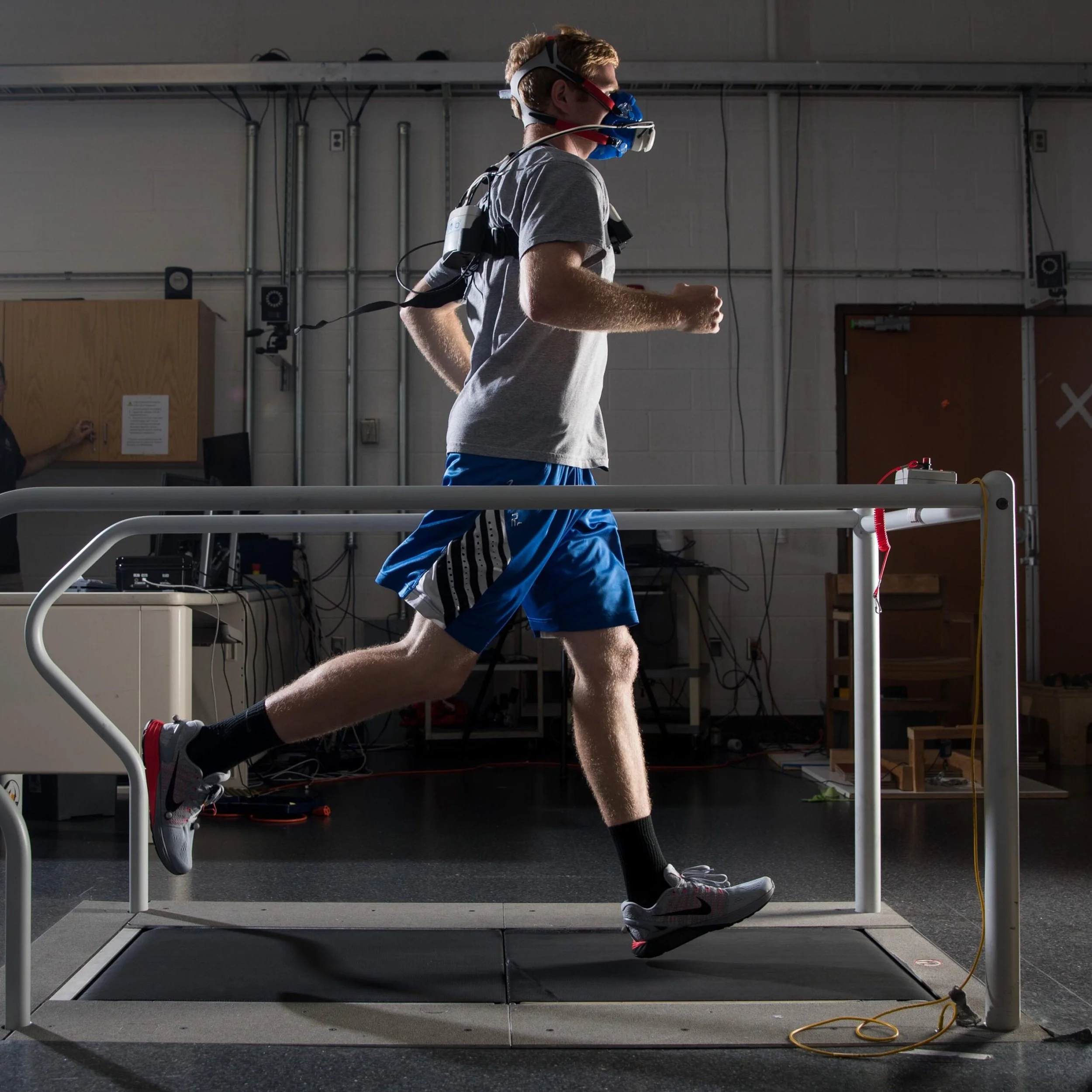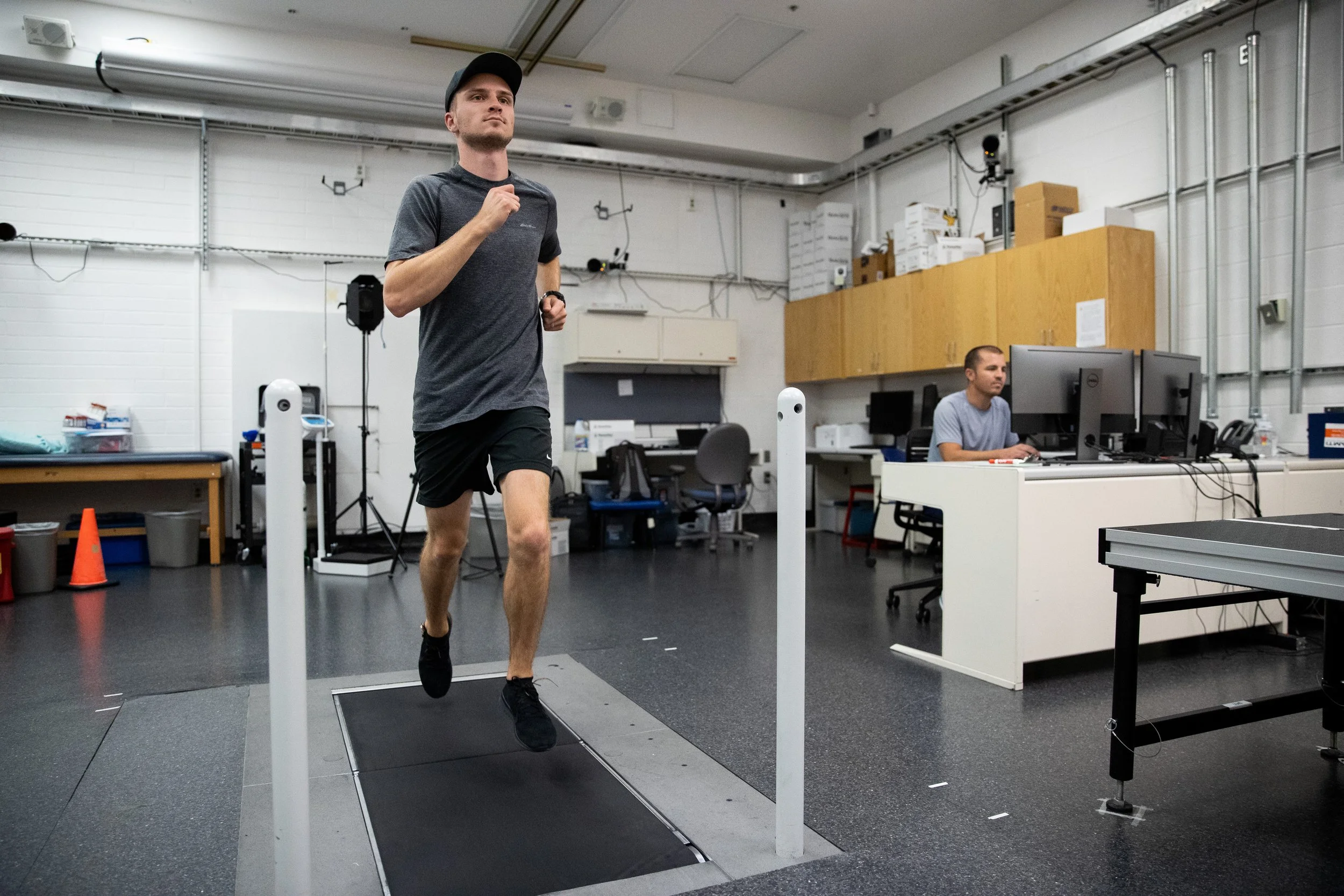Innovation with Impact: XO-NANO’s Path from PhD Research to Defense Applications
Jake Merrell, president and co-founder of XO-NANO, drew on previous entrepreneurial experience and newly acquired engineering expertise from his PhD studies to develop a novel product—Smartfoam technology. Early on, his team used the technology in football helmets, using sensors to measure impact forces to assess concussions. However, the team quickly identified other important applications and pivoted from helmets to insoles. This breakthrough demonstrated the power of their Smartfoam technology and laid the foundation for XO-NANO’s mission: turning advanced materials into practical solutions that enhance safety, performance, and human health.
At its core, XO-NANO’s Smartfoam technology is designed to measure forces in motion—anywhere that foam can be applied. Their flagship product, the ExoSole insole, embeds Smartfoam throughout its surface to measure ground reaction forces in three dimensions: vertical, anterior-posterior, and medial-lateral. This capability makes it possible to calculate running and walking power, a metric long confined to expensive lab equipment such as force plates or instrumented treadmills. XO-NANO’s validation studies have proven the accuracy of their insoles against gold-standard lab systems, paving the way for new applications in biomechanics, physical therapy, athletics, and beyond.
The Department of Defense has taken special interest in XO-NANO’s work. Musculoskeletal injuries are a leading cause of attrition in the military, particularly during basic training. By providing insights into gait, fatigue, and readiness, XO-NANO’s insoles could help predict and prevent injuries before they happen. The technology has also shown promise in GPS-denied tracking, offering the ability to calculate a soldier’s position based on force and motion data when satellite signals are unavailable. These applications underscore the broad potential of Smartfoam to make measurable impacts in both civilian and defense settings.
XO-NANO’s success has been closely tied to the federal SBIR/STTR programs, which provide early-stage, non-dilutive funding for high-risk, high-reward innovations. Their first award under their R&D company, Nano Composite Products, Inc., was a BYU-partnered STTR that supported the early helmet work. Since then, they have received multiple SBIR awards, including a recent Phase I and Phase II project that pushed their insole technology forward significantly. While finding the best fit for their Smartform technology took some time, the company has since built a team of ten engineers, scientists, and operations staff who have given them the technical depth and credibility to win larger and more competitive awards.
Reflecting on their journey, Merrell stresses the importance of aligning technology with the right funding opportunities: “When you have the right fit, it’s much easier to write a proposal that succeeds. It’s tempting to stretch your technology to match different opportunities, but success comes when the alignment is clear. When your innovation matches exactly what the grant is looking for, writing a strong proposal—and winning it—becomes much easier.”
Merrell also emphasized the importance of having diversified revenue streams. XO-NANO has tried hard not to rely solely on SBIR/STTRs for revenue. Merrell said, “The last thing you want to do is expect you get a SBIR grant and then you don't get it, and it just halts everything. I can imagine that'd be very frustrating, so having other funding streams has been essential for us.”
The Nucleus Grow (previously known as the Utah Innovation Center) has been a key partner in XO-NANO’s growth. Early on, the Grow team provided crucial proposal feedback, helped identify funding sources, and even offered bridge funding between SBIR phases through its non-recourse loan program. Merrell credits the Nucleus Grow team with keeping the company moving forward when resources were tight, and he appreciates the outside perspective they provided to ensure proposals communicated clearly to reviewers. “Linda Cabrales, the Nucleus Grow’s Director, was an invaluable resource in the very early days, and to be honest, we probably didn't utilize the services and try to get feedback as much as we should have, in light of the latter SBIRs, ” Merrell states.
Today, XO-NANO continues to expand into biomechanics labs, physical therapy clinics, and consumer sports markets, building on its foundation of research, innovation, and Utah-grown support.
If your Utah small business has questions about SBIR/STTR funding opportunities, please contact Nucleus Grow at grow@nucleusutah.org.


